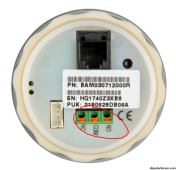rharries
New Member
My (self installed) DC system includes a 175 watt panel, Victron MPPT controller and 100 Ah Renogy LiFePO4 battery with heating function.
For alternator charging, I have a Victron Orion non-isolated DC charger.
I also have a Victron BMV 712 with temperature probe that I use to monitor state of charge and other interesting data points.
The past weekend I noticed that the BMV was recording a significant charge (200 w) when driving away from my frozen campsite. The battery temperature was recording 0*C. I am aware the damage that can occur if a Lithium battery is charged below ~5*C, so I disabled the DC charger.
The low temperature relay on my BMV was disabled for a test the prior week and I forgot to turn it back on.
My question is: Would the power from the DC charger have be directed to initially heating the smart self heating Renogy battery, or did I potentially damage my new battery?
I am hoping that the battery is smart enough to not accept a charge to its cells in freezing temperatures based on the attached screenshot from Renogy website, but verification would be much appreciated.
Thanks,
RH
For alternator charging, I have a Victron Orion non-isolated DC charger.
I also have a Victron BMV 712 with temperature probe that I use to monitor state of charge and other interesting data points.
The past weekend I noticed that the BMV was recording a significant charge (200 w) when driving away from my frozen campsite. The battery temperature was recording 0*C. I am aware the damage that can occur if a Lithium battery is charged below ~5*C, so I disabled the DC charger.
The low temperature relay on my BMV was disabled for a test the prior week and I forgot to turn it back on.
My question is: Would the power from the DC charger have be directed to initially heating the smart self heating Renogy battery, or did I potentially damage my new battery?
I am hoping that the battery is smart enough to not accept a charge to its cells in freezing temperatures based on the attached screenshot from Renogy website, but verification would be much appreciated.
Thanks,
RH




